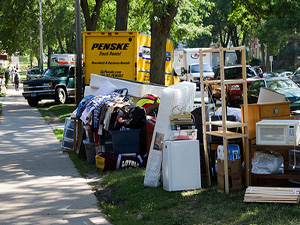Tenant Eviction
For a number of reasons, tenants sometimes can’t or don’t uphold their end of the lease. Unfortunately, careful screening can’t prevent unemployment, unwelcome pets, or destructive parties. Evicting a leaseholder is a very drastic measure, but when is enough, enough? Know that when a tenant is unable to live up to their terms of the rental agreement, you are within your rights to begin the eviction procedure.
Here are 4 of the most common reasons for eviction.
1.Failure to pay rent. If the tenant fails to send the check, does not respond to your calls and notices, or refuses to make the payment, the next logical step would be give a termination notice (also known as a “Pay or Quit” notice).
2. Violating an important provision of the lease. If your agreement explicitly forbids subleasing, moving in addition occupants or pets, it is up to you to decide whether you will amend the lease to allow it. If you refuse consent or find the subtenant unacceptable, but the unwelcome guest still moves in, begin the eviction process.
3. Damaging the property. In some cases, housekeeping practices can create unhealthy and dangerous situations. If there’s a buildup of waste, damaging alterations, or substantial destruction of property that decrease the property’s value, you can take the steps to terminate the lease and evict.
4. Illegal activity. You don’t need to wait until the tenant is convicted of a crime or arrested to take action. If you can provide fact-based suspicion that illegal proceedings are taking place, you may be able to evict the tenant. First, check with state law so you know what level of proof is needed to support the termination.




